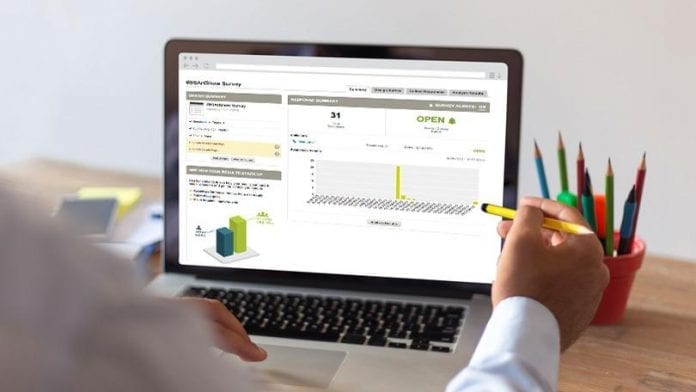Surveys are highly valuable tools for collecting insightful information about your audience and customers. They show you what you’re doing right, what needs to be improved and can help spark completely new ideas.
But for any of this to happen, your survey needs to be effective and created with a purpose.
Many businesses are using online surveys to get feedback from consumers who are already short on time and flooded with requests. This means your survey needs to be well-formulated to increase the likelihood of receiving completed surveys, so you get the data you’re looking for.
Here are the top tactics that will make your survey effective and drive results.
Introduce Your Survey
Telling people why you’re conducting a survey has a twofold purpose.
First, you are letting them know why they’re taking time out of their day to answer your questions. Consumers like to know why they are being asked for information and telling them upfront will give them a reason to continue on with the survey and build trust & goodwill.
Another important step in this process is telling your audience how long the survey will take, as time will be the most important commodity for many of them.
A short introduction will also force you to clearly define the purpose of your survey and can be a helpful reminder to yourself to think about your goals behind the survey. Each survey should have one specific purpose so that you get specific results.
Be Brief and to the Point
Next, keep it short and focused. This is vital to conducting an informed and intuitive survey.
Surveys should be as short as possible (under 10 minutes is best) while still including all relevant questions & any necessary contextual information. If your respondent gets tired or loses interest, they are likely to simply abandon the survey part way through, meaning you will miss valuable data.
Try to avoid questions that require lengthy or complicated answers. Close-ended questions make it easy to analyze results. While open-ended questions can give you interesting insights & ideas, they’re difficult to categorize and for identifying patterns.
Use Effective Questions

To get the best results, questions should be simple, specific, and relevant.
Avoid questions that aren’t related to the one clear purpose behind your survey. Include only questions that are necessary to get you the data you need. You also need to make it clear to the respondent what is being asked of them.
Try to avoid compound questions that use the word “and”. This usually means you’re asking for more than one answer or you are communicating multiple ideas in the one question, confusing your reader. Each question should only lead to a single answer.
Here are a few specific highly effective questions you can include:
● “How satisfied are you with our product?” and include a rating scale or multiple choice answer that ranges from very dissatisfied to very satisfied.
● “What do you like most about our service?” This is a very short, open-ended question that should give you relatively specific answers.
● “What would you like to see improved about our current service?” This will help you gain insights into the desires of your customers, allowing you to think of ways to tailor your offering, or to even generate completely new ones.
● “What problem does our product solve for you?” This type of question can give you valuable insight when it comes to advertising. You’ll get an idea of which pain points your product/service addresses and how you can use this for marketing.
Avoid Bias
It’s natural for bias to creep into survey questions, but you want to eliminate it as much as possible so that you’re getting the most accurate results.
For example, asking a question like, “Most people enjoy the quick response time of our team. What has your experience been like?” is leading people to answer in a positive way, which is biased.
Instead, eliminate adjectives and ask direct questions like, “What has your experience been with the response time of our service team?”
Create a Good Flow

Online surveys can without questions that clearly connect to one another create a poor experience for the user.
You can avoid this by making sure questions are placed in a logical order. Questions that relate to the same topic should all be grouped together. Effective surveys begin with general questions, then move onto more specific areas with more detailed and probing questions. If you need to collect personal data or ask sensitive questions, save these for last, as it will increase the likelihood of the survey being completed.
A good flow will keep respondents moving from one question to the next and will cut down on survey abandonment. Click here to read more about this topic.
Make It Well-Designed
While you’re likely conducting a survey because you want facts and data, the design is one of the most important elements from the user’s point of view.
Along with a logical flow of questions, a design that is simple and appealing will keep respondents moving through your survey, making it much more effective.
This can be achieved by keeping formatting consistent, keeping questions structured the same way throughout, and by using the same numbers, elements or phrases for rating scales.

Use Survey Software
Online surveys can be daunting to put together since they have many moving parts and internal logic.
Using a quality survey software allows you to use templates and other tools to customize your survey without the need for an IT degree. These software options are also huge time savers for analyzing data, with real-time results and automatically generated reports.
Most importantly, good survey software will increase the effectivity and quality of your survey designs, which in turn will generate the effective and quality results from your audience.
Test Your Survey

This is a key part of survey effectiveness that is easy to overlook.
Once you’ve done all the hard work of writing and designing your survey, don’t forget to test it out! Run through the survey multiple times, testing multiple responses to ensure all your survey logic is sound. Make sure you also have colleagues take the survey before-hand to see if there are any confusing questions or technical issues.
By following these tactics for creating effective surveys, you’ll soon have all the data you need to analyze and determine the next steps for your business.









